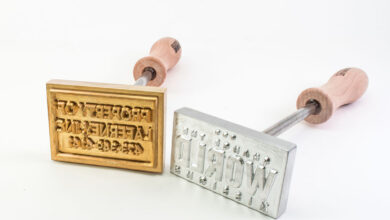drawing:oldj_7nsvxk= skull

Investigating the Craft of Drawing Skulls: Strategies, Imagery, and Inventive Applications
Prologue to Skull Drawing
drawing:oldj_7nsvxk= skull __ Drawing skulls has a long history of craftsmanship, representing both the magnificence and delicacy of life. From the early works of Renaissance bosses to contemporary outlines in tattoo plans and current workmanship, the skull remains a strong subject that summons a scope of feelings and understandings. This article dives into the specialty of drawing skulls, investigating its strategies, imagery, and different inventive applications.
Authentic Setting: Skulls in Workmanship
The portrayal of skulls in craftsmanship can be traced back to antiquated civilizations. The Aztecs, for instance, used skulls as images in their strict ceremonies, addressing demise and resurrection. In middle-aged Europe, skulls were noticeable in token mori workmanship, which filled in as a sign of human mortality. During the Renaissance, craftsmen like Leonardo da Vinci concentrated on human life structures inside and out, including the skull, which they carefully portrayed to figure out the intricacies of the human structure.
In the twentieth century, skulls took on new implications for workmanship. The Mexican craftsman José Guadalupe Posada’s renowned “La Calavera Catrina” turned into a famous picture related to Día de los Muertos, a festival that praises the dead. Skulls additionally became noticeable in present-day and contemporary craftsmanship, with specialists like Damien Hirst utilizing them to comment on the transient idea of life and the certainty of death.
The Imagery of Skulls
Skulls are quite possibly the most powerful image in workmanship and culture. They address mortality, the certainty of death, and the transient idea of human life. Notwithstanding, skulls likewise represent resurrection and the pattern of life, as found in societies that honor progenitors and celebrate eternal life.
In different subcultures, skulls take on various implications. In Gothic and troublemaker styles, they frequently represent defiance and resistance. In tattoo workmanship, skulls can mean strength, security, or a suggestion to make every second count. The flexibility of skull imagery makes it a rich subject for specialists, considering different translations and innovative articulations.
Strategies for Drawing Skulls
Drawing skulls requires a comprehension of fundamental life systems and the capacity to catch both the design and the pith of the skull. Here, we’ll investigate a few strategies that can assist craftsmen with making reasonable and expressive skull drawings.
Figuring out Skull Life Systems
Prior to endeavoring to draw a skull, understanding its anatomy is essential. The human skull is comprised of 22 bones, including the head and the facial bones. Key elements to zero in on incorporate the eye attachments (circles), the nasal depression, the cheekbones (zygomatic bones), and the facial structure (mandible). Concentrating on physical references, like clinical outlines or 3D models, can assist craftsmen with getting a handle on the extents and subtleties of the skull.
Laying out Extents
Getting the extents right is fundamental when drawing a skull. Begin by drawing fundamental shapes to delineate the skull’s design. A typical strategy is to draw an oval for the head and then partition it into segments to precisely place the facial highlights. The eye attachments regularly sit in the center third of the skull, with the nose and facial structure beneath. Utilizing rules can assist with keeping up with evenness and extent throughout the drawing.
Adding Profundity and Concealing
To make a practical skull drawing, adding profundity and concealing are significant. Focus on the light source and what it means for the skull’s surfaces. Use incubating, cross-bringing, or texturing procedures to make shadows and features. The regions around the eye attachments, nose, and jaw will normally have further shadows, while the temple and cheekbones might get all the more light. Bit by bit, develop the concealment to make a three-layered impact.
Catching Surface
Skulls have a particular surface that they can try to catch. They are smooth in certain areas, like the temple and cheekbones, yet may have more unpleasant surfaces around the nasal depression and the jaw. Utilizing different pencil strokes can assist with conveying these distinctions. Try different things with various procedures, for example, smearing for a smoother appearance or involving sharp lines for more unpleasant surfaces.
Inventive Uses of Skull Drawings
Skull drawings have tracked down their direction into different inventive fields, from compelling artwork to form and advanced media. Here are a portion of the ways in which craftsmen and planners integrate skulls into their work.
Artistic work
In artistic work, skulls keep on being a well-known subject, frequently used to investigate topics of mortality, personality, and the human condition. Contemporary specialists might involve skulls in strange pieces, unique portrayals, or as a feature of bigger story works. The flexibility of the skull as an image permits specialists to draw in complex subjects and pass significant messages on through their specialty.
Tattoo Plan
Skulls are perhaps the most famous theme in tattoo plans. They can be delivered in different styles, from customary dark and dim authenticity to bright neo-conventional plans. In tattoo workmanship, skulls frequently convey individual importance, representing anything from beating difficulties to commending life. The flexibility of skull symbolism permits tattoo craftsmen to make special crafts that resonate with their clients’ accounts and characters.
Visual communication and outline
In visual communication and outline, skulls are often utilized in logos, banners, collection covers, and products. They appeal to a wide crowd, especially in kinds like stone, metal, and elective music, where they are frequently connected with subjects of disobedience and resistance. Computerized specialists can explore different avenues regarding various impacts, for example, misfire workmanship or neon lighting, to make striking and contemporary skull plans.
Style and Extras
Skulls have turned into a staple in style, especially in other options and top-of-the line streetwear. Fashioners integrate skulls into dresses, gems, and frills, frequently involving them as an explanation piece or to convey a specific taste. The skull’s perseverance through claim in design is a demonstration of its flexibility and the manner in which it very well may be adjusted to suit different styles, from tense and defiant to rich and refined.
Social Importance and Present-Day Translations
The social meaning of skulls has developed over the long haul, impacted by authentic occasions, social developments, and imaginative patterns. Today, skulls are images of death and are additionally celebrated as seals of life, strength, and character.
Skulls in Mainstream Society
Skulls have saturated mainstream society in various ways. In films, they are frequently used to portray risk or the shocking, while in music, they are a typical theme in collection craftsmanship and band logos. The prevalence of skulls in mainstream society is somewhat due to their visual effect and the close-to-home reaction they bring out.
One of the most conspicuous purposes of skulls in present-day culture is in the “Day of the Dead” festivals, where beautiful sugar skulls (calaveras) are made to respect expired friends and family. These dynamic skulls represent the delight of recollecting the dead, mixing the ideas of life and passing in a festival of coherence and memory.
Contemporary Craftsmen and Skull Symbolism
Contemporary craftsmen keep pushing the limits of skull symbolism, investigating new strategies and understandings. For instance, road craftsmen might involve skulls in spray painting and wall paintings to pass on friendly and political messages. In the meantime, computerized specialists could make hyper-reasonable or conceptual skull plans that challenge conventional ideas of craftsmanship.
One prominent model is the English craftsman Damien Hirst, whose work “For hell’s sake” includes a platinum cast of a human skull encrusted with precious stones. This piece, which mixes extravagance with mortality, has ignited conversations about the worth of workmanship, the significance of life, and the commercialization of death.
End: The Ageless Allure of Skull Drawing
drawing:oldj_7nsvxk= skull __ The craft of drawing skulls is both a specialized test and an inventive investigation. Whether used to concentrate on life structures, convey profound imagery, or make eye-getting plans, skulls remain a convincing subject for specialists across disciplines. Their getting-through claim lies in their capacity to summon strong feelings and incite thought, making them an immortal theme in the realm of craftsmanship.
As craftsmen keep on exploring different avenues regarding new methods and understandings, the skull will without a doubt remain a focal figure in craftsmanship and culture, addressing the complicated and diverse nature of human life. Whether you’re a fledgling hoping to further develop your drawing abilities or an accomplished craftsman looking for motivation, the skull offers vast opportunities for imaginative articulation.



